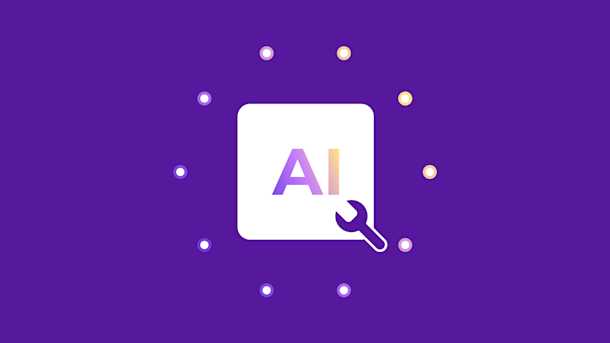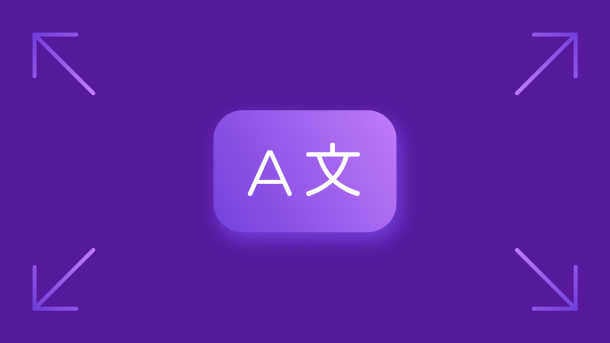In a world separated by language barriers, AI translation tools bridge the gaps. These advanced systems don’t just translate word for word; they interpret context, capture nuance, and adapt to industry-specific terminology for precise results.
In this guide, we’ll explore six of the best AI translation tools—highlighting their key features and pricing—to help you select the solution that aligns with your global growth strategy and unique translation needs.
How do AI translation tools work?
AI translation tools are reshaping the way we bridge linguistic divides, using sophisticated algorithms to seamlessly translate text from one language to another. By combining technologies like machine learning, Generative AI, natural language processing (NLP), and neural machine translation (NMT), AI translation has become remarkably adept at understanding the nuances of human communication, capturing context, and adapting to specific cultural nuances.
Machine translation tools analyze vast amounts of multilingual content, picking up on the unique grammar patterns, word choice, and sentence structure to make context-aware and precise translation choices. This data-driven approach ensures that translations are not just literal but also culturally attuned.
AI translation goes far beyond word-for-word conversion. Modern machine translation software takes a holistic approach, considering entire sentences and paragraphs to grasp the true meaning and tone of the original text. The result is accurate translations that sound natural and convey messages that resonate across cultures.
As AI technology continues to evolve, these tools are becoming even more precise and efficient, promising even greater capabilities in the near future.
The benefits of using AI translation tools
When it comes to translation, AI excels, offering extensive benefits for businesses looking to adapt their marketing efforts across languages and cultures:
- Accuracy: AI translation tools help incorporate brand-specific terminology and optimize translation memory, making outputs more natural and consistent while ensuring it aligns with your brand's voice and industry standards.
- Speed: AI translation processes large volumes of text quickly, supporting multiple languages simultaneously and reducing project timelines from weeks to just days or hours.
- Cost-efficiency: By minimizing reliance on traditional human translation services, AI translation tools significantly lower costs while accelerating turnaround times and enhancing scalability.
- Continuous improvement: AI tools learn and adapt through adaptive translation, refining their output with each use. They can also be customized to fit industry-specific terminology and brand tone.
- Integration: Many AI machine translation tools seamlessly connect with existing business software, integrating into workflows with minimal disruption.
The 6 top AI translation tools for business translation
From DeepL to Google Translate, the AI translation market is booming. Here are six of the best tools for translating text available today:
Smartling
Smartling's cutting-edge AI translation platform leverages large language models (LLMs) alongside machine translation, other NLP tools and human expertise, offering a suite of tools that handle everything from quickly translating text to complex localization projects. With advanced workflow automation and automatic quality control, Smartling streamlines the translation process from content creation to delivery.
Pros
- Proven efficiency: Reduces translation workload by up to 90%, freeing up your team for other tasks.
- Hybrid approach: Merges the speed of AI with the nuanced understanding of human translators.
- LLM-enabled: Smartling Translate leverages a broad range of LLMs, including GPT, for instant nuanced and natural translations.
- Quality control: Features built-in checks to monitor translation accuracy.
- Project automation: Supports automated project management for complex, multi-language projects.
Cons
- Setup time: Initial configuration may take time to optimize, but Smartling aims to complete onboarding for new customers within 30 days.
- Training required: Teams may need guidance to maximize the platform’s features.
Pricing
Contact Smartling for a demo and a custom quote.
DeepL
DeepL is an AI text translation tool known for its impressive accuracy and natural output. This AI translation app stands out for its ability to switch between formal and informal tones, making it a considerable option for different contexts and needs.
Pros
- Cost-effective: One of the more budget-friendly solutions in the AI translation market.
- Formatting retention: Maintains the original document’s layout, minimizing the need for post-translation adjustments.
Cons
- Limited language support: Supports only 30 languages, fewer than some competitors.
- Integration constraints: Limited options for integrating with other software and workflows.
Pricing
DeepL plans start at $8.74 monthly, with a 30-day free trial.
Google Translate
Google Translate is a highly versatile AI language translation tool known for its extensive capabilities across text, image, and speech translations in over 100 languages, making it highly accessible for individuals and businesses alike.
Pros
- Comprehensive language coverage: Supports over 100 languages, one of the broadest selections available.
- Diverse input options: Accepts various input types, including text, images, and spoken language.
- Adaptive learning: Built on a continuous learning model, ensuring translations improve over time.
Cons
- Limited cultural context: May overlook subtle cultural nuances and context-specific meanings.
- Basic business features: Lacks some of the specialized functions other dedicated business translation tools offer.
Pricing
Free for general use. For business applications, Google offers the Cloud Translation API, which has variable, volume-based pricing tailored to different service types and translation models.
LILT
LILT’s Contextual AI Engine enhances translation workflows with adaptive, predictive suggestions that refine with each use. This technology lets translators concentrate on nuanced content while AI manages repetitive text, increasing efficiency without sacrificing accuracy. LILT’s system continually learns from projects, delivering increasingly tailored and precise translations in real time.
Pros
- Adaptive translation: Continuously improves suggestions with each use, tailoring translations to brand-specific language and style.
- Efficiency gains: Automatically manages repetitive tasks, allowing translators to dedicate more time to challenging content.
- Data privacy: Maintains strict security, using data solely for the client’s projects and not sharing it across organizations.
Cons
- Initial setup: Requires time to train the system on brand-specific terminology and tone of voice for optimal results.
- Higher investment: May be costly for smaller projects with limited translation needs.
Pricing
LILT offers tailored pricing based on project scope and specific requirements. For a personalized quote, contact LILT directly.
Phrase
Phrase’s AI-powered localization platform offers a scalable solution for managing varied translation needs across departments. Its customizable TMS enables organizations to centralize workflows, automate content management, and access brand-specific translation memories and term bases, all while supporting integration with any LSP or in-house team.
Pros
- Customizable workflows: Automates and customizes workflows to suit various translation needs.
- Comprehensive integration: Over 50 integrations connect to other localization systems, ensuring quick implementation.
- Scalable: Centralizes content and translation assets across departments for cohesive project management.
- Analytics-driven insights: Phrase Analytics provides actionable insights through custom data visualizations.
Cons
- Advanced setup: Initial configuration may require careful planning to maximize the platform’s customizability.
- Complexity: Full utilization of Phrase’s suite may require some training.
Pricing
Phrase’s plans range from $27 monthly for freelancers to $1,045 for teams. It also offers custom solutions that include vendor management and integrations for platforms like Adobe.
Lokalise
Lokalise simplifies translation for software, mobile apps, websites, and Shopify stores through its Expert and Flow platforms. Lokalise Expert supports translations across content types, offering AI-powered tools, automation, and an in-context editor to maintain brand consistency. Lokalise Flow allows quick, high-quality Shopify store translations with automatic updates, ensuring product lines stay current.
Pros
- Powerful AI translation: Compares outputs from multiple engines, like GPT-4, Google, and DeepL, for high-quality translations.
- In-context editing: Provides real-time adjustments for a seamless user experience.
- Broad integrations: Works with Figma, GitHub, Jira, WordPress, and more to enhance workflows.
Cons
- Complexity for small projects: May feel feature-heavy for smaller translation needs.
- Potentially costly for larger teams: Pricing can be high for teams with extensive translation needs or large volumes of hosted keys.
Pricing
Lokalise offers plans starting at $120 monthly for small teams, scaling to advanced solutions with features like style guides, advanced integrations, and extensive key limits for $825 monthly.
How to choose the right AI language translation tool
Today’s AI translation software offers a broad spectrum of features and capabilities. These guidelines will help you find the solution that best fits your organization:
- Define your needs: Start by assessing your translation requirements. Estimate your monthly translation volume, specify target languages, and identify any specialized features (e.g., visual context, automated workflow routing, or built-in quality checks) that align with your business goals.
- Prioritize quality and accuracy: Look for tools with proven translation quality in your core languages. Solutions that blend AI speed with human review options and customizable settings for brand voice will help ensure consistency and accuracy.
- Consider scalability and pricing: Choose a translation platform that can adapt as your needs grow. Whether you prefer pay-per-word or subscription-based pricing, ensure the tool aligns with your budget and projected usage.
- Check security standards: Make sure the platform meets privacy requirements for handling sensitive content, ideally with enterprise-grade security features and compliance certifications.
- Test before you commit: Take advantage of free trials to see how well different AI translation products handle your content types. Review user experience, customer support, and accessibility to ensure it meets your team’s expectations.
How Smartling’s LanguageAI™ enhances business translation
For businesses that aim to localize, breaking language barriers has never been more crucial—or more achievable. By harnessing cutting-edge AI advances paired with expert human oversight, Smartling's AI translation empowers businesses to communicate accurately, efficiently, and cost-effectively across languages.
Want to learn more? Check out our free eBook onAI-Powered Localization to discover how cutting-edge AI and neural machine translation technology support faster market entry and streamlined workflows—all without breaking the bank.
Download the eBook today to learn how to extend your brand's reach across borders effortlessly.






